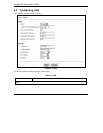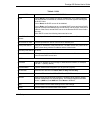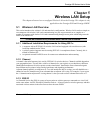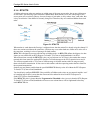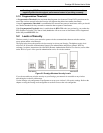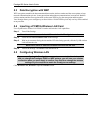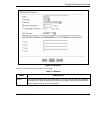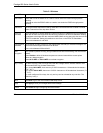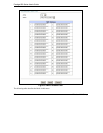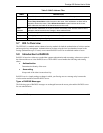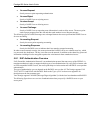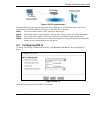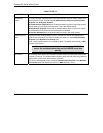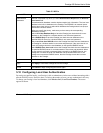
Prestige 650 Series User’s Guide
5-6 Wireless LAN Setup
Table 5-1 Wireless
LABEL DESCRIPTION
Hide ESSID
Select Yes to hide the ESSID in so a station cannot obtain the ESSID through passive
scanning.
Select No to make the ESSID visible so a station can obtain the ESSID through passive
scanning.
Channel ID The range of radio frequencies used by IEEE 802.11b wireless devices is called a channel.
Select a channel from the drop-down list box.
RTS/CTS
Threshold
The RTS (Request To Send) threshold (number of bytes) for enabling RTS/CTS handshake.
Data with its frame size larger than this value will perform the RTS/CTS handshake. Setting
this attribute to be larger than the maximum MSDU (MAC service data unit) size turns off the
RTS/CTS handshake. Setting this attribute to zero turns on the RTS/CTS handshake.
Enter a value between 0 and 2432.
Fragmentation
Threshold
The threshold (number of bytes) for the fragmentation boundary for directed messages. It is
the maximum data fragment size that can be sent.
Enter a value between 256 and 2432.
WEP
Encryption
WEP (Wired Equivalent Privacy) encrypts data frames before transmitting over the wireless
network.
Select Disable to allow all wireless computers to communicate with the access points
without any data encryption.
Select 64-bit WEP or 128-bit WEP to use data encryption.
Key 1 to Key
4
The WEP keys are used to encrypt data. Both the Prestige and the wireless stations must
use the same WEP key for data transmission.
If you chose 64-bit WEP, then enter any 5 ASCII characters or 10 hexadecimal characters
("0-9", "A-F").
If you chose 128-bit WEP, then enter 13 ASCII characters or 26 hexadecimal characters ("0-
9", "A-F").
You must configure all four keys, but only one key can be activated at any one time. The
default key is key 1.
Back
Click Back to go to the main wireless LAN setup screen.
Apply
Click Apply to save your changes back to the Prestige.
Cancel
Click Cancel to begin configuring this screen afresh.



